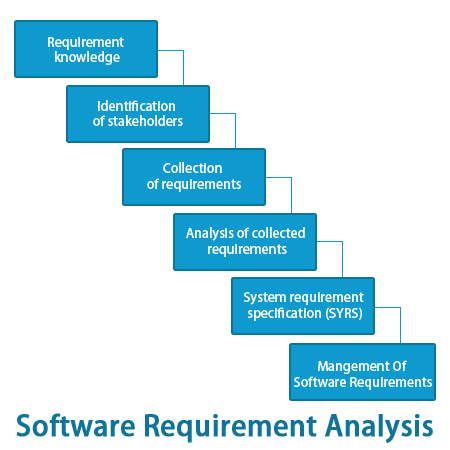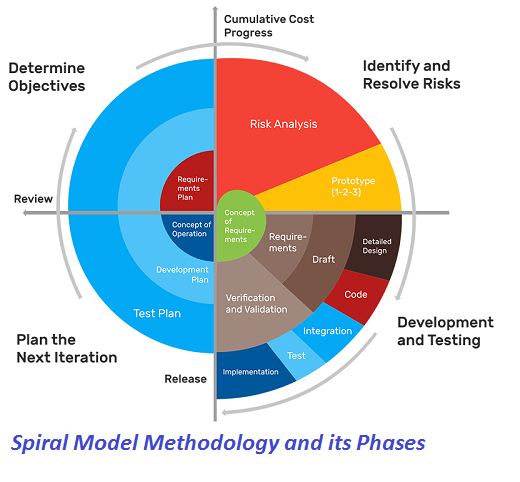TASK 2
February 18, 2022
a. Explain SDLC with an example?
the purpose of software development life cycle (SDLC) is to deliver a high quality product which is as per customer requirements. It must be completed in predefined timeframe and cost it contains of detailed plan how to plan, build and maintain .
For Example, A software has to be developed and a team is divided to work on a feature of the product and is allowed to work as they want. One of the developers decides to design first whereas the other decides to code first and the other on the documentation part.
This will lead to project failure because of which it is necessary to have a good knowledge and understanding among the team members to deliver an expected product
SDLC Cycle
SDLC Cycle represents the process of developing software.
SDLC Phases
1) Requirement Gathering and Analysis
During this phase, all the relevant information is collected from the customer to develop a product as per their expectation. Business analyst and Project Manager gather a information from customer.
Once the requirement is done SRS (Software Requirement Specification) document is created.
2) Design
This phase is based on requirements phase once the information gathered designing starts its like a blueprint of output.
3) Implementation or Coding
This is done once developers get a design copy, this design is translated into coding .
4) Testing
This is the phase where testers are used once coding is finished it will sent for testing if any defects found we need to to let developer know to fix them .
Retesting, regression testing is done until the point at which the software is as per the customer’s expectation. Testers refer SRS document to make sure that the software is as per the customer’s standard.
5) Deployment
Once the product is tested, it is deployed in the production environment or first UAT (User Acceptance testing) is done depending on the customer expectation.
6) Maintenance
After deployment of production environment any issues comes up developers need to be fixed.
b. What happens In Requirement Analysis phase in SDLC?

In this phase Gathering requirements for the project is the most important part of the SDLC for project managers and internal stakeholders of a project. During this phase, the customer states the expectations of the project including who will use the product, how the customer will use the product, and the specific information included with any special customer requirements related to the software. The customer meets with business managers and analysts to provide the requirements. It's important for the project team to understand the needs of the customer because this information is critical to developing the product the customer requests.
c. Explain STLC with an example?
STLC is a sequence of different activities performed by the testing team to ensure the quality of the software or the product and it provides a step-by-step process to ensure quality software.
STLC Phases
There are following six major phases in every Software Testing Life Cycle
- Requirement Analysis
- Test Planning
- Test case development
- Test Environment setup
- Test Execution
- Test Cycle closure

1) Requirement Analysis:
Requirements could be either functional or non-functional. Automation feasibility for the testing project is also done in this stage.
- Identify types of tests to be performed.
- Gather details about testing priorities and focus.
Senior QA manager determines the test plan and estimate the cost for the project and test environment, test schedule are determined .the test plan gets ready and finalized.
3) Test Case Development Phase:
- Create test cases
- Review and baseline test cases and scripts
- Create test data
- Setup test Environment and test data
- Perform smoke test on the build.
5) Test execution :
6) Test cycle closure:
Test Cycle Closure phase is completion of test execution which involves several activities like test completion reporting, collection of test completion matrices and test results.
d. If you are given a new requirement, how would you go about testing this requirement?

Requirement changes are allowed after every cycle before going to the next cycle in spiral model
using regression testing we check new requirement is working or not .
e. What would you do during the Test Plan phase in STLC ?
QA teams developers, business managers, customers understand exactly how the website or app will be tested.
Components of a Test Plan
- Scope: Details of the objectives of the particular project. Also
- Schedule: Details of start dates and deadlines for testers to deliver results.
- Resource Allocation: Details of which tester will work on which test.
- Environment: Details of the nature, configuration, and availability of the test environment.
- Tools: Details of what tools are to be used for testing, bug reporting, and other relevant activities.
- Defect Management: Details of how bugs will be reported, to whom
- Risk Management: Details of what risks may occur during software testing, and what risks the software itself may suffer if released without sufficient testing.
- Exit Parameters: Details of when testing activities must stop.
f. How do you log bugs/defects?
While reporting the bug to developer the Bug Report should contain the following information
- Defect ID– Unique identification number for the defect.
- Defect Description – Detailed description of the Defect including information about the module in which Defect was found.
- Version – Version of the application in which defect was found.
- Steps – Detailed steps along with screenshots with which the developer can reproduce the defects.
- Date Raised – Date when the defect is raised
- Reference– where in you Provide reference to the documents like . requirements, design, architecture
- Detected By – Name/ID of the tester who raised the defect
- Status – Status of the defect
- Fixed by – Name/ID of the developer who fixed it
- Date Closed – Date when the defect is closed
- Severity which describes the impact of the defect on the application
- Priority which is related to defect fixing urgency.
- Severity Priority could be High/Medium/Low based on the impact urgency at which the defect should be fixed respectively
- Collect information of bugs & feature requests, We think that the more information we have, the less risky our decisions are.
- Assign values to each bug & feature request.
- Priority is generally set from P0 is high priority and p5 can be fixed in next phase.

Comments
Post a Comment